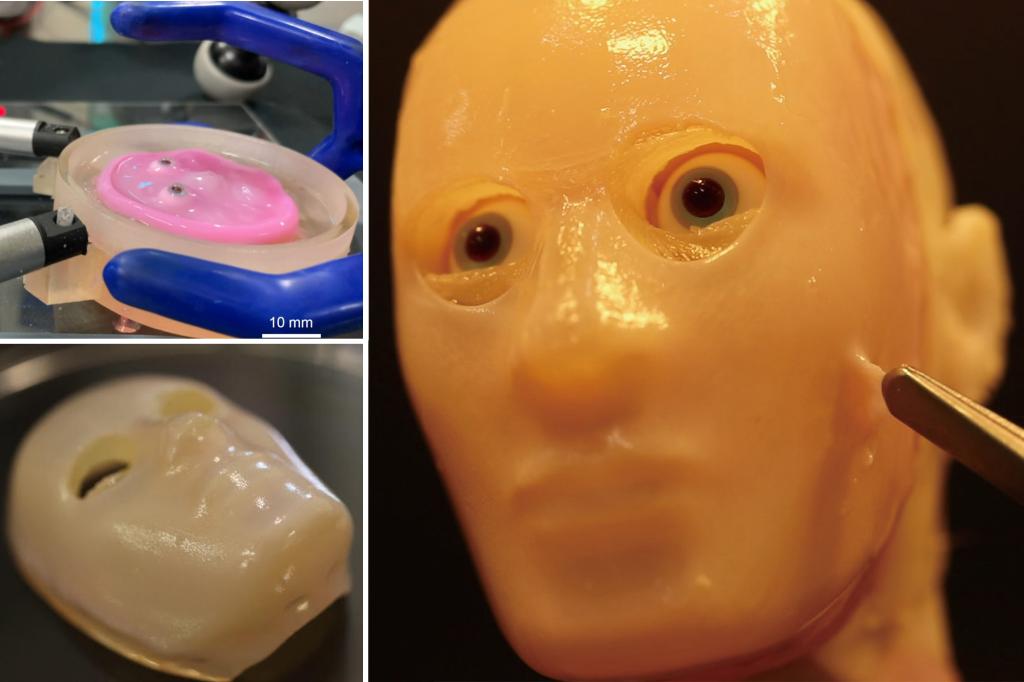This is the face of the future.
A team of scientists has unveiled a robot face covered in a delicate layer of living skin that heals itself and wrinkles into a smile in the hope of developing more human-like cyborgs.
The skin was made in a University of Tokyo lab from a mixture of human skin cells grown on a collagen model and placed on a 3D-printed resin base, New Scientist reported.
Scientists on the project — who published their findings in Cell Reports Physical Science on Tuesday — believe living skin could be a key step in creating robots that heal and feel like humans.
“This living skin would be particularly useful for robots that interact closely with humans, such as healthcare, services, satellites and humanoid robots where human functions are required,” Professor Shoji Takeuchi told the Times of London.
Lab-grown skin is attached to a simple, small robot face that can smile — and the tissue can heal itself.
“Skin can repair itself if it’s damaged, similar to how human skin heals wounds,” Takeuchi explained.
“And integrating sensory functions like touch and temperature detection is more feasible with living tissue.”
Dermal skin cells are first cultured, and epidermal cells are then added on top to complete the structure, he added.
The skin was attached to the robot’s face using what Michio Kawai of Harvard University described to New Scientist as “perforation-type anchors,” which perforate the resin base and create small voids for the tissue to fill.
The perforations are actually the equivalent of the flexible, strong ligaments that humans and animals have under their skin, Takeuchi told the Times of London.
“It creates a smooth, strong connection between the skin and the robot… The natural flexibility of the skin and the strong adhesion method means that the skin can move with the robot’s mechanical components without tearing or peeling off,” he noted.
Although lab-grown skin still doesn’t closely resemble real human skin, Takeuchi said the latest work is still crucial.
“We identified new challenges, such as the need for surface wrinkles and a denser epidermis to achieve a more human appearance,” he said.
“We believe that creating thicker, more realistic skin can be achieved by incorporating sweat glands, sebaceous glands, pores, blood vessels, fat and nerves.”
The skin’s capabilities also have surprising implications for the cosmetics industry, Kawai told New Scientist.
When the scientists made the robot smile for a month, they found that the tissue reproduced the appearance of expressive wrinkles in the skin, he said.
“The ability to recreate wrinkle formation on a palm-sized lab chip can simultaneously be used to test new cosmetics and skin care products that aim to prevent, delay or improve wrinkle formation,” he explained. .
Meanwhile, the experts are back in the lab.
“It may take up to 10 years of research and development before living skin can be used by robots that regularly interact with humans,” Takeuchi said.
“However, we are making progress, and with continued effort, this vision can become a reality in the next decade.”



